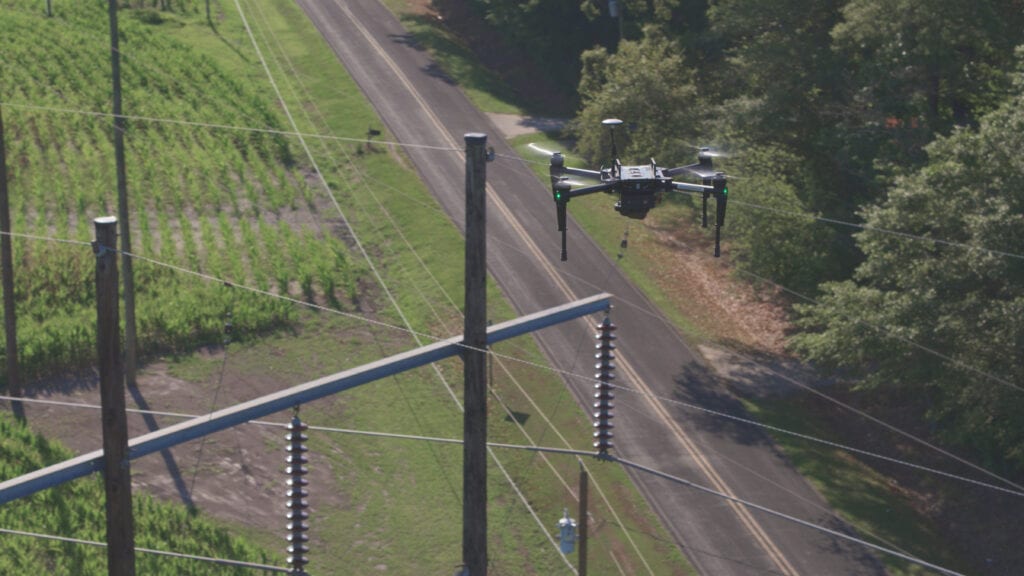
PrecisionHawk is looking to pursue EVLOS and BVLOS in 2021. (PrecisionHawk)
The integration of drones into the national airspace is approaching quickly as companies are developing new and innovative technologies and government bodies are figuring out how to regulate them. PrecisionHawk, a commercial drone and data company, is one of many innovating in this space.
Kristen Ellerbe, VP of product management and design at PrecisionHawk, spoke to Avionics International about the challenges they faced in the wake of the COVID-19 pandemic and their goals for 2021.
Avionics International: What challenges or opportunities were presented in the UAV space from the COVID-19 pandemic in 2020? How will these carry over into 2021?
Ellerbe: COVID-19 presented many challenges, as well as opportunities, in 2020 and some of these will carry over into the new year. One very obvious challenge was the sudden significant shift in how and where people worked. While that was a difficult and momentous transition, the value of data and data analytics really crystalized, as companies managing dispersed physical assets shifted to remote collection methodologies, such as UAVs, that could gather data in a safer way compared to manual inspections. UAVs have many benefits – a benefit directly related to COVID-19 is the ability to conduct inspections with limited exposure to other people. The remote aspect of UAVs allowed smaller inspection teams without inherent touchpoints.
More than just the remote collection, the visual audit data from remote collections also enables digital insights that you do not get from manual visual inspections. Beyond helping workers stay safe, this shift also led to more uniform and accurate findings with the ability for audits and new analysis from the computer, along with cost savings, meaning it’s likely a trend that is here to stay.
Avionics International: What new technologies is PrecisionHawk looking to explore in 2021? What are PrecisionHawk’s goals with these technologies?
Ellerbe: I think the whole industry hopes to take advantage of new technologies related to [extended visual line of sight] EVLOS and [beyond visual line of sight] BVLOS, but we are also waiting for regulation to catch up to our innovations. Here at PrecisionHawk, we are focused on bringing action-ready solutions to the market today. While we wait, we are exploring accelerators to use for full end-to-end data analytics solutions.
We’re integrating different technologies ranging from AI on the edge, fleet management systems, and automated flight options to bring to reality the fastest realization of actionable insights from collection in the field. We do this all with the goal of learning about physical assets as consistently, safely, and quickly as possible.
Avionics International: How will PrecisionHawk advance artificial intelligence and machine learning in UAVs in 2021?
Ellerbe: Our biggest focus is to take the models we’ve already created and continue to advance towards the edge. On cloud, batch computing has its place in comprehensive and advanced analytics, but there is also real value in targeting the right use cases on the edge. How do we bring the most critical identification as near to real-time as possible? This will all be facilitated by new chips, heavy payloads, and more computing power onboard our UAVs. Edge AI will facilitate faster reporting for critical issues and move our insights from the field to the command center. This will accelerate automated workflows and ultimately allow the industry to leverage AI on the edge to reduce time-to-value for supercritical issues.
Avionics International: What trends do you see emerging in the UAV space in 2021?
Ellerbe: We will make more progress in the shift toward fully autonomous flight. We have a specific autonomous flight for some of our most critical structures, but we need to continue to push better, smarter flights for more complex and sensitive structures. Today’s FAA standards dictate that even if a drone is automated you have to be able to take control of it, and even more limiting, you also have to keep it within visual line of sight.
But autonomous capabilities are rapidly advancing and as the use cases for drones continue to multiply – another shift accelerated by the pandemic – the FAA will have to decide how it wants to integrate drones into the national airspace sooner rather than later, a process they will likely be working through next year.